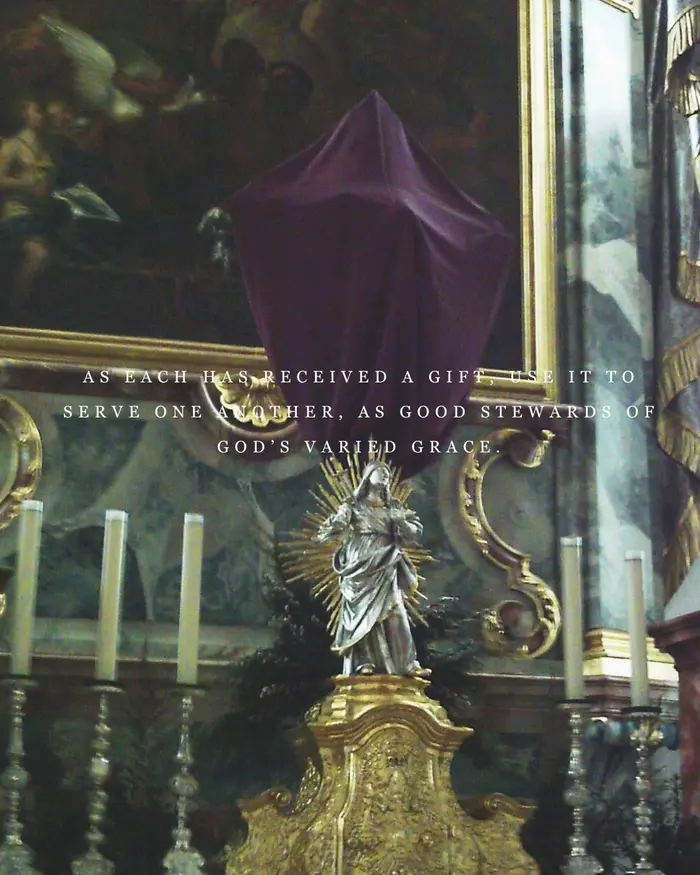What Covering Statues During Lent Really Means (And Why It Matters)
What Covering Statues During Lent Really Means (And Why It Matters)

If you walk into church during the final weeks of Lent, you might be surprised. The crucifix is covered, the statues of the saints are hidden behind purple cloths, and even images of Jesus are veiled. The church feels quieter, plainer maybe even a little empty.
The Origins of Veiling in Lent
This tradition is very old. It began as early as the 9th century. Back then, a large cloth called a Hungertuch or “Lenten veil” was hung in front of the altar to hide it during Lent. Over time, this practice grew to include covering all sacred images starting on Passion Sunday, the fifth Sunday of Lent.
The veils mark an important change. They show us that we are now entering the most serious and prayerful part of Lent. It’s like a fast—not for our stomachs, but for our eyes. By hiding the beauty around us, the Church helps us focus more on Jesus’ suffering and the meaning of His sacrifice.
A Gospel Moment That Inspires the Veils
This moment in the church year also reminds us of a verse from the Gospel of John. After Jesus spoke about who He was, the Gospel says, “Jesus hid Himself and went out of the temple” (John 8:59). In a similar way, we now hide His image and prepare to walk with Him through His Passion.
From the Cross to the Resurrection
This quiet and powerful practice teaches us something important: before the joy of Easter comes the sorrow of the Cross. We can’t skip ahead. First, we must go with Jesus through His suffering. The veils invite us to do this—not just with our eyes, but with our hearts.
Then, on Good Friday, we see the crucifix again not yet in glory, but in His pain. And when Easter comes, all the veils are lifted. The beauty returns. And this time, we see it with new eyes and greater love.
Thank you so much for taking the time to read this blog. If you think someone else might find comfort or meaning in this too, feel free to share it.
We’re all walking on this journey in our own ways, but it’s beautiful when we can walk it together.
Wishing you a blessed Holy Week and a joyful Easter Sunday!
Be sure to visit our online store front Ecclesiastical Sewing where you may shop for Liturgical Fabrics, altar linen fabrics, church vestment-making patterns, liturgical machine embroidery designs, church vestment trims and notions and so much more. You may also find us on Ecclesiastical Sewing on Facebook, Twitter, and Pinterest. Sign up for our mailing list at the bottom of the page on our online store front and receive a free copy of our Small Linens Booklet as our way of saying thank you for following along.
The Role of the Church in Christian Life (Why it Matters)
Why Abandoning Tradition Is Quietly Destroying Our Cultural Soul






 RSS - Posts
RSS - Posts
You must be logged in to post a comment.